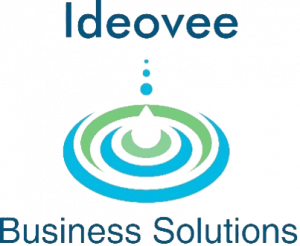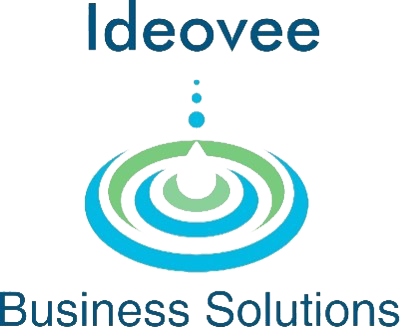
What is ABM?
ABM is a focused, strategic approach to business marketing based on personalization, knowledge of the prospective buyer, and account awareness in which unified marketing, business development, sales and operations align to raise awareness of the seller’s products and/or services. It is a very focused approach by sales & marketing with their commitment to the same objectives, process and measurement for continual improvement of the customer experience.
Reach your ideal customer with messages that focus on their problem (first) and your solution (second). By selecting prospective customers that will benefit from your product and services, with a compelling value proposition tailored to the prospects identified: you can more effectively create awareness of your product, shorten the deal cycle and win new customers that get the value of the solution you provide.
Account-based marketing is essentially an innovative sales & marketing process. ABM is primarily used by B2B companies to maximize their marketing efforts with their existing customer base, and is a technique that has continuously proven to be extremely effective.
However, results have proven that when the seller works ABM conscientiously ABM works for them and delivers superior results.
ABM isn’t a “one-and-done” B2B marketing and sales strategy. It requires constant experimentation and upkeep around target lists, outreach, messaging, and more.
Why practice ABM?
ABM produces quantifiably better results for sales and marketing teams:
- 97% of marketers achieved higher ROI with ABM than with any other marketing initiatives according to Alterra Group. ABM drives ROI.
- 84% of marketers say account-based marketing strategies outperform other marketing investments. ABM is superior to other marketing efforts.
- 208% more revenue is generated in companies that have aligned their sales and marketing teams with ABM. ABM results in higher revenue.
- 92% of companies recognize the value of ABM and see the strategy as a “must have” for B2B marketing.
- 96% of B2B marketers who have used ABM report a positive impact on their marketing’s success. (DemandBase)
- 85% of marketers who use ABM find ABM has higher returns then any other marketing approach they use, with about half of them reporting “significantly higher” (ITSMA)
- 82% of B2B marketers said ABM greatly improves internal alignment or sales and marketing (LinkedIn)
- 33% of ABM practitioners are more effective at connecting marketing efforts to revenue.
- 1.5 times greater rate of shortening the length of the buyer’s journey through ABM.
If your sales & marketing team isn’t consistently applying ABM, your business is at a competitive disadvantage.
How do I start with ABM? Step 1: Account Selection
Getting started methodically with ABM Step 1 is Account Selection.
- Find customers that matter to your business
- Find the accounts that drive your business growth
- Pick the customers who have the problem you solve.
- Which customers are best for the growth of your business?
The first step with account-based marketing is to identify high-value prospects for your business. Which customers will most dramatically and positively affect your business growth? This stage is about picking the right customers and the most-valued customers for your business. Target the prospective accounts that are most likely to deliver revenue, and identify those prospects which are in-market and ready to buy. What is the ideal customer profile (ICP) for your products and services?
Having the right data to back it up will ensure you’re heading in the right direction with your customers. Major contributors to this data can be the employees who work on the front-line with prospects and customers; they know your customers better than anyone else. The next step in the methodology is apply your ICP with market research to find and focus on high probability, ready-to-purchase accounts that will impact your ABM strategy, and your buyer persona. Once the right target accounts are identified that’s the foundation for your ABM aligned marketing and sales activity.
It’s not about every possible customer, Stage 1 is about identifying the customers that matter most.
For example, if a business were to have the ideal customer press release; what would it say about that customer? Who are they? Why did they buy? What value did they perceive in your offering? Is that customer a recognized brand that will influence the decision of other similar prospects? These are the types of strategic questions that the BetterProspecting.biz ABM process and experts use to help clients improve sales and succeed.
With ABM Stage 1, there’s a process to find and quantitatively rank potential customers to identify the right customers for your business that benefit most from the problem your business solves. These are customers who will see value in the solution, want it and are willing to pay for it. Consistently applying a template with a ranking methodology that will help you quantitatively evaluate your most-valued prospects.
Some of the criteria a selling business may want to ask to identify their ideal customers could be distinguishing characteristics like geography, proximity, size of the prospect by revenue, size of the prospect by number of employees, whether they are a private or public company, etc.
Choosing the right accounts means you’re selecting accounts that are:
- The best fit for your solution
- Most ready to engage right now
- Are aligned with your sales strategy and business goals
Ask yourself, “Who’s my best customer?” ABM allows you to use technology to target and manage accounts that are worth your time and will result in the highest ROI. There’s a wide range of martech and salestech tools available to help with the account selection process.
This ABM Step 1 is about picking the right customers and the most valued customers for the business. When a business starts, it offers a product or service that solves a problem for its customers. Too many businesses work on broadly gathering customers without focusing on landing the customers that matter most to their business’s survival and growth.
Another option is to critically assess the market you serve and identify the customers that will make a difference in the business. Who are the high-profile customers who can afford to pay for the value we create? Identify them and then follow up by contacting them to create awareness, interest, knowledge, and purchase commitment for our products and services.
This is a very focused approach to securing the customers that will have the maximum growth impact on our business. Who are the top 10 or top 20 customers that will make a difference in the growth and future of our business if we can secure them?
As opposed to playing a numbers game, and contacting as many potential customers as possible without a deep analysis of their impact on your business, account-based customer development aligns resources, attention, effort and operations with our most desired customers.
A little introspection will help. There are a few queries to reflect on your business:
What function does your business perform? (What products or services does it offer?)
For whom does your business perform this function?
How does your business perform this function?
Why does your business exist?
What problem do your goods and services solve?
Who in the market experiences the problem we solve?
How do your products and services create value for the businesses that experience the problem(s) you solve?
What are the 5 top characteristics of your ideal customers? build the ideal customer profile (ICP)
The questions that guide the process include:
- Where have we sold most effectively in the past?
- Which kinds of accounts have proven to be most profitable over time?
- What characteristics are most predictive of sales success?
- What traits should rule out an account?
- Which accounts do we already have an advantage in?
- Which accounts do we already have engagements with?
- What accounts deliver the most value (which can include revenue as well as strategic value)?
Identifying best-fit target accounts
Tips to IGNITE your revenue pipeline!
- IDENTIFY: accounts within your ICP (ideal customer profile) that have the best chance of becoming customers.
- GENERATE: personalized messaging
- NAIL: your content plan before you start outreach and trial different medium: podcasts, blogs, interviews, e-books, webinars, +++
- INCLUDE: the cross-team functions of marketing, sales, ops, bizdev and finance as one integrated whole team
- TABULATE: results and track your ROI metrics conscientiously
- ENGAGE: reach out to customers, start with a personalized, high touch message and follow up with a methodical customer journey omnichannel plan.

